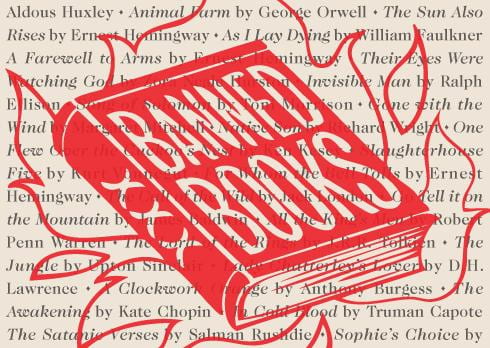Table of Contents
Stories About Censorship
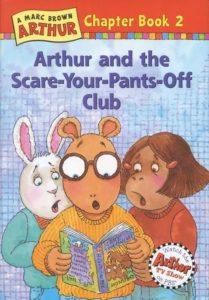
|
In Marc Brown’s Arthur and the Scare-Your-Pants-Off Club (Little, Brown Books for Young Readers, 1998), Arthur, everybody’s favorite aardvark, and pals have been eagerly waiting for the new Scare-Your-Pants-Off Club book to arrive at the library – only to find that the series has been banned by a concerned parents’ group as too frightening for young readers. Arthur and friends then embark on a campaign to get their books back. A short chapter book for ages 5-8. |
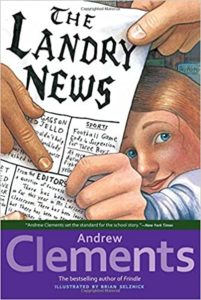
|
In Andrew Clements’s The Landry News (Atheneum Books for Young Readers, 2000), fifth-grader Cara Landry begins to publish a newspaper, featuring – in the first edition – a critical editorial about her apathetic teacher Mr. Larson, who is so impressed by it that he stops ignoring the class and returns to his past creative teaching methods. When Cara publishes a poignant story about divorce written by a classmate, however, the school principal – long looking for a reason to fire Mr. Larson – is infuriated and declares the story inappropriate for young readers, setting off a conflict over freedom of the press and First Amendment rights. For ages 8-12. |
| For templates and resources for creating your own Landry-type newspaper, visit Kids’ Wings: The Landry News. | |
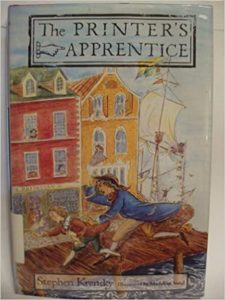
|
Stephen Krensky’s The Printer’s Apprentice (Delacorte, 1995) is the story of the early 18th-century John Peter Zenger trial, a crucial event in the history of freedom of the press, as experienced by Gus and Zach, two young apprentices. It’s out of print, but is available from used-book dealers and public libraries. For ages 8-12. |
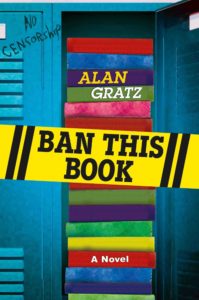
|
In Alan Gratz’s Ban This Book (Starscape, 2018), fourth-grader Amy Anne is appalled when a parent has From the Mixed-Up Files of Mrs. Basil E. Frankweiler removed from the school library – and in retaliation starts a banned-books library in her locker. For ages 8-12. |
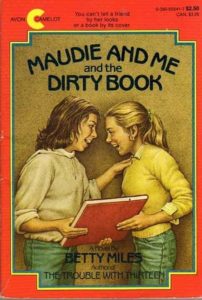
|
In Betty Miles’s Maudie and Me and the Dirty Book (Knopf Books for Young Readers, 1989), sixth-graders Kate and Maudie have volunteered for a school program that involves reading books to first graders. The “dirty book” that the girls read describes a puppy being born – which brings on a host of sex-related questions and comments from the kids. Some members of the community react with outrage; and Kate and Maudie find themselves in the middle of a censorship battle. Out of print, but available from used-book dealers and public libraries. For ages 9-12. |
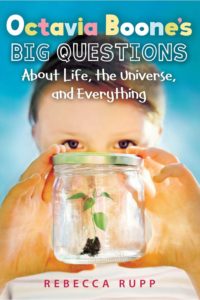
|
In Rebecca Rupp’s Octavia Boone’s Big Questions About Life, the Universe, and Everything (Candlewick, 2010), Octavia’s life is disrupted when her mother, Ray, joins the fundamentalist Redeemers and her artist father insists he needs time alone to find himself. Octavia – unhappy with the Redeemers who reject science, forbid fantasy books, and insist on traditional gender roles – struggles for independence and freedom of belief, while eventually coming to understand her mother’s needs and motivations. “Funny, caustic, thought-provoking, and a bit of a damp hankie…” writes one reviewer. For ages 9-12. |
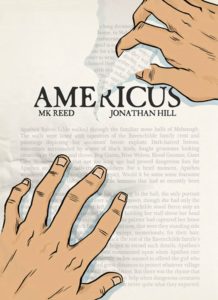
|
In M. K. Reed and Jonathan David Hill’s great graphic novel Americus (First Second, 2011), Christian activists are attempting to ban eighth-grader Neil’s favorite fantasy series, The Chronicles of Apathea Ravenchilde, from the library on grounds of immorality and heresy. Neil, with the help of Charlotte, the feisty youth librarian, sets out to save his beloved books. For ages 10 and up. |
| See a sample chapter of Americus. | |
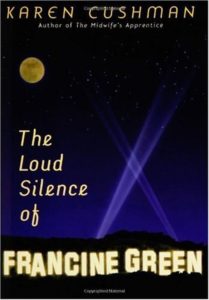
|
In Karen Cushman’s The Loud Silence of Francine Green (Clarion Books, 2006), Francine is an eighth-grade student at the restrictive Los Angeles All Saints School for Girls during the tense days of the McCarthy era. When fiery Sophie arrives at the school and begins protesting the lack of free speech, Francine begins rethinking her own views. Themes include friendship, growing up, and intellectual freedom. For ages 10-14. |
| The Loud Silence of Francine Green Discussion Guide has discussion questions and student writing and research projects. | |
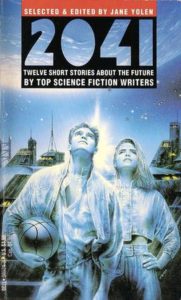
|
2041: Twelve Short Stories About the Future by Top Science Fiction Writers (Laurel Leaf, 1994) includes Connie Willis’s “Much Ado About [Censored],” an hilarious tale of Shakespearean censorship in a future age of extreme political correctness. Portia wants her high-school English class to read Shakespeare, but protests are legion: the Angry Women’s Alliance argues that Romeo and Juliet promotes suicide and drug abuse; the Wildlife Club claims that As You Like It furthers destructive attitudes toward the environment (Orlando carves Rosalind’s name on a tree); the National Cutlery Council objects to the portrayal of swords as deadly weapons; and the Drapery Defense League objects to Hamlet, because Polonius was stabbed while behind a curtain, thus implying that curtains are dangerous. For ages 11 and up. |
| Willis’s story is also available online. | |
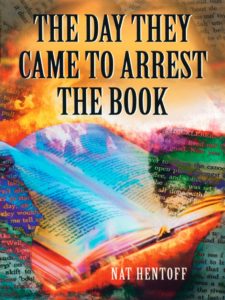
|
In Nat Hentoff’s The Day They Came to Arrest the Book (Laurel Leaf, 1983), Barney Roth, editor of the George Mason High School newspaper, comes up against a group of students and parents determined to ban The Adventures of Huckleberry Finn. A discussion promoter and a good pick for book clubs. For ages 12 and up. |
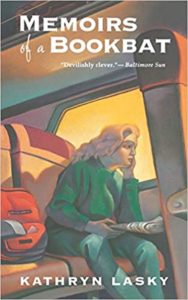
|
In Kathryn Lasky’s Memoirs of a Bookbat (Harcourt, 1996), 14-year-old Harper Jessup is a passionate reader. Then her parents convert to Christian fundamentalism and Harper, willy-nilly, becomes a “migrant for God” as the family travels the country in a motor home advocating book censorship and protesting blasphemy, abortion, and the theory of evolution. Harper is forced to hide her beloved books (satanic); and struggles to cope with how different her parents’ beliefs now are from her own. Eventually, with the help of a friend, she manages to escape, and at the end of the book she’s living with her supportive grandmother. For ages 12 and up. |
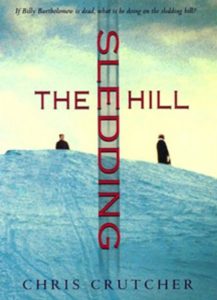
|
In Chris Crutcher’s The Sledding Hill (Harper Tempest, 2006), main character Eddie Proffit has just lost both his father and his best friend, Billy – though Billy, dead, is the narrator of the book. Eddie, traumatized by his dual loss, has stopped talking. His mother is pressuring him to join a local evangelical church, presided over by the Reverend Tarter, who also teaches English at the high school. When Eddie’s class starts reading the suspect novel Warren Peece by an obscure author named (heh) Chris Crutcher, Tarter – citing bad language and homosexuality – goes on a campaign to have the book removed from the school curriculum. For ages 12 and up. |
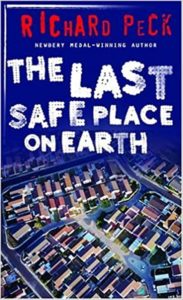
|
In Richard Peck’s The Last Safe Place on Earth (Delacorte, 1995), 15-year-old Todd, his seven-year-old sister Marnie, cousin Diana, and parents have moved to the idyllic community of Walden Woods. Walden Woods, however, proves to have a dark side: Christian fundamentalists are attempting to ban Anne Frank’s Diary from the schools because it implies that all religious views are equally valid; and babysitter Laurel has been brainwashing Marnie, convincing her that Halloween is evil and anyone who celebrates it is going to hell. For ages 12 and up. |
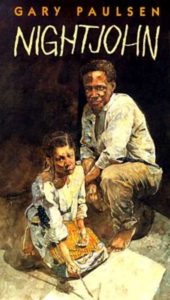
|
The protagonist of Gary Paulsen’s Nightjohn (Laurel Leaf, 1995) is twelve-year-old Sarny, a slave on a southern plantation in the 1850s. Slave are forbidden to learn to read, but even so Sarny does, under the tutelage of the indomitable Nightjohn, who had escaped north to freedom, but returned to teach reading in secret. A brutal, painful, and wonderful book. For ages 12 and up. |
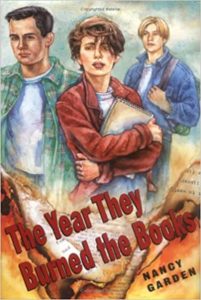
|
In Nancy Garden’s The Year They Burned the Books (Farrar, Straus & Giroux, 1999), main character Jamie Crawford, editor of the high-school newspaper, runs up against a fundamentalist school board member who, on moral grounds, is censoring articles in Jamie’s paper, removing sex education books from the school shelves, and even staging a book burning. The story is complicated by Jamie’s struggle to come to terms with her own homosexuality. For ages 12 and up. |
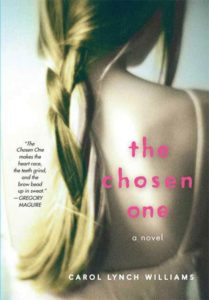
|
In Carol Lynch Williams’s The Chosen One (St. Martin’s Griffin, 2010), 13-year-old Kyra lives in a walled compound with her family – her father, his three wives, and Kyra’s twenty siblings – and belongs to an ultra-religious polygamous sect, ruled over by the Prophet Childs and his God Squad. When the Prophet announces that Kyra is to become the seventh wife of her sixty-year-old Uncle Hyrum, Kyra – who has been reading forbidden books from the mobile library and secretly seeing a young sect member, Joshua – rebels. Tense and complex. For ages 13 and up. |
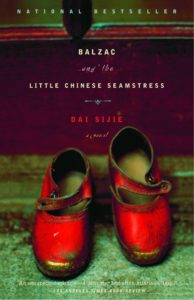
|
In Dai Sijie’s Balzac and the Little Chinese Seamstress (Anchor Books, 2002), set during the Chinese Cultural Revolution of the 1960s and 70s, two young boys, respectively the sons of a doctor and a dentist, are sent to a mountain village for “re-education” through labor. There they fall for the village tailor’s beautiful daughter and find solace in a stash of forbidden Western books. As in Markus Zusak’s The Book Thief (see Up in Smoke, below), a prominent theme is the power of literature to comfort people in adversity. For teenagers and adults. |
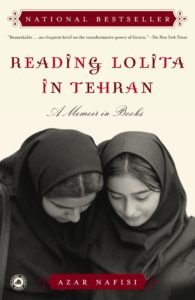
|
Azar Nafisi’s Reading Lolita in Tehran (Random House, 2008) is the compelling story of how Nafisi, a literature professor in repressive Iran, gathered a group of students at her home to read forbidden Western books by such authors as Vladimir Nabokov, Henry James, Jane Austen, and F. Scott Fitzgerald. For teens and adults. |
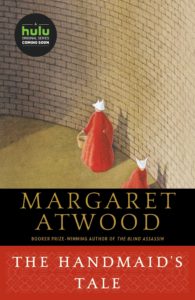
|
Margaret Atwood’s The Handmaid’s Tale (Anchor Books, 1998) – itself an often-banned book – is a darkly fascinating story of a fanatical future society in which women are wholly repressed by the state. The main character is Offred, a handmaid assigned to the household of the Commander, a high official in the Republic of Gilead (the former United States), whose duty – as one of Gilead’s rare fertile women – is to bear children. Gilead is chilling: books are forbidden; women are not allowed to read, hold jobs, own property, or have money; and the handmaids, who wear wimple-like headdresses and long red robes, are not even allowed to make eye contact with other people. For older teenagers and adults. |
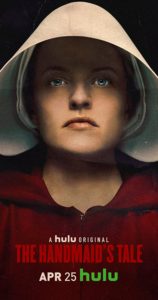
|
A movie version of The Handmaid’s Tale (1990), starring Natasha Richardson, Faye Dunaway, and Robert Duvall, is rated R; also see the excellent multi-episode TV series (2017). For mature teens and adults. |
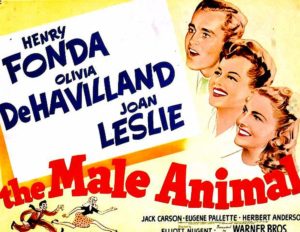
|
In the film The Male Animal (Warner Brothers, 1942), based on the play of the same name by James Thurber and Elliot Nugent, Tommy Turner, a college English professor, has come under fire for preparing to read a letter to his class by Bartolomeo Vanzetti, of the politically explosive Sacco and Vanzetti case. The free speech issue is paired with a subplot in which football hero Joe Ferguson, ex-boyfriend of Turner’s wife Ellen, has returned to campus and is renewing his interest in Ellen. With Henry Fonda and Olivia DeHavilland. |
| For information on the Sacco-Vanzetti case, including background information, a chronology, trial transcripts, and images, see The Trial of Sacco and Vanzetti. | |
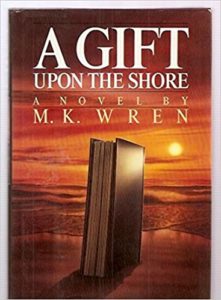 |
In M.K. Wren’s A Gift Upon the Shore (Ballantine, 1990), set in a not-far-distant future, young Mary Hope is taken in by Rachel, a painter, following the collapse of civilization. The two survive on their Oregon farm, struggling to preserve the world’s remaining books – a legacy put at risk when they come in contact with the Arkites, a fundamentalist society that rejects everything but the teachings of the Bible. For older teens and adults. |
